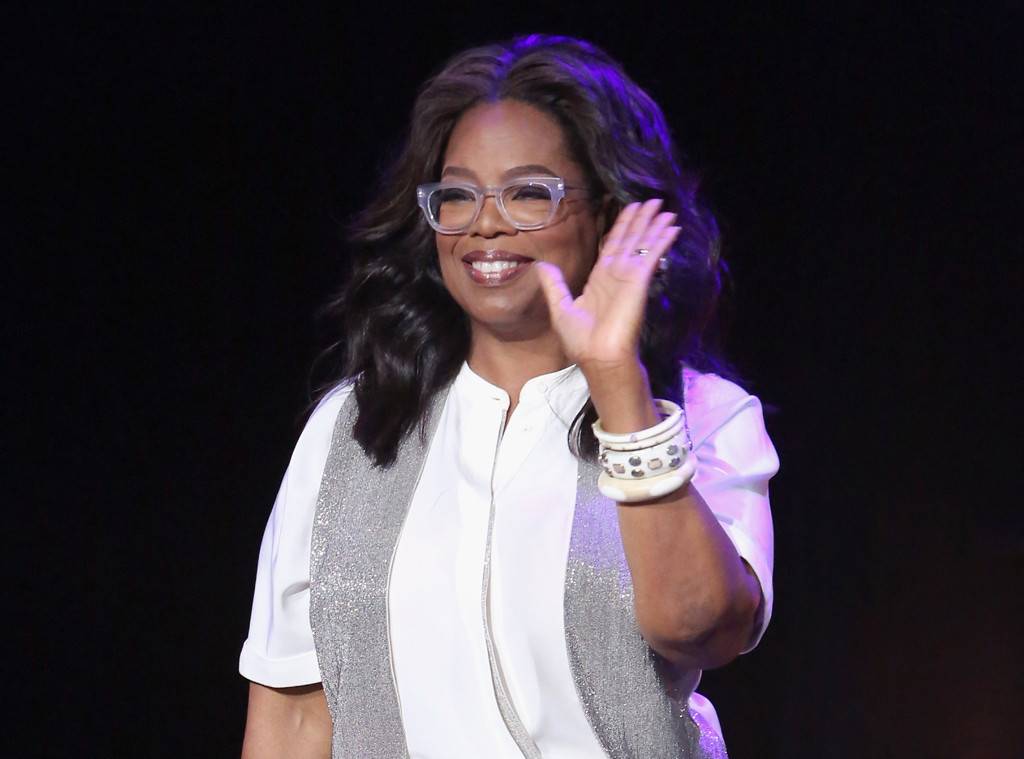“I will say this: Being in that room was electrifying,” said King, who was at Winfrey’s table. “It was the right person giving the right speech at the right time. She wanted that moment to be more than women wearing black dresses in solidarity. She really did want to speak to young girls around the country. She really did want to say, ‘Enough, already!’ I think she delivered on al that in a very eloquent well. But will she run for president? I think it’s a very intriguing idea.”
We Speak Entertainment
Oprah Winfrey “Intrigued” by 2020 Presidential Run, Gayle King Says

Last year, Oprah Winfrey told The Hollywood Reporter‘s Awards Chatter podcast, “I will never run for public office.” So, imagine her surprise when people rallied for her to run for President of the United States in 2020—all thanks to her empowering speech at the 2018 Golden Globes.
Lady Gaga and Meryl Streep have already offered their support. “It’s up to the people,” Winfrey’s partner, Stedman Graham, told The Los Angeles Times. “She would absolutely do it.”
But does Winfrey want to do it? Her best friend Gayle King discussed the possibilities on CBS This Morning Tuesday. “I do think that’s interesting, because Stedman says he thought the reporter said to him, ‘Would she make a good president?’ And he said, ‘Absolutely, she would.’ That’s how he interpreted the question. Because this is the thing: Stedman would never so cavalierly say, ‘Absolutely, she would do it. It’s up to the people.’ He would never do it. I got e-mails from people yesterday that said, ‘Is Stedman being strategic or is he being supportive?’ He is nothing but supportive,” she explained. “He would never just throw it out there like that.”
To get some clarity, Norah O’Donnell re-read the quote Graham gave to the newspaper. “He did say, ‘It is up to the people,'” King told her co-host. “But I’m telling you, his interpretation of the question was…He thought the reporter was saying, ‘Would she be a good president?'” King then said she “absolutely” does not think Winfrey’s “position has changed” since then. “I don’t.”

We Speak Entertainment
Aro Rose Releases Emotional New Single “Live Without You” — Now Available Worldwide

Genre-blending singer/songwriter Aro Rose has officially dropped her highly anticipated new single, “Live Without You,” and it’s now streaming everywhere music lives.
A hauntingly honest track about love, loss, and letting go, “Live Without You” showcases Aro’s signature dark pop aesthetic—think cinematic piano lines, ghostly synths, and lyrics that hit where it hurts. It’s raw. It’s vulnerable. It’s that 3AM track you cry to…and then play again.
“I wrote this one straight from my gut,” Aro says. “It’s about that moment when you realize you’ve outgrown someone you thought you couldn’t live without. There’s sadness in it—but also strength.”

Self-taught and self-made, Aro Rose first turned heads with her distinctive sound that sits somewhere between Lana Del Rey’s noir romanticism and Fiona Apple’s emotional honesty. Since stepping away from the major label system, she’s carved out a fiercely independent path—and “Live Without You” is her boldest, most personal release to date.
The single is produced by longtime collaborators Gabriel Maciocia and Robert Federici, who help bring Aro’s dark visions to life with lush, atmospheric production that lets her voice shine through the shadows.
“Live Without You” is available now on Spotify, Apple Music, Amazon Music, YouTube, and all major streaming platforms.
Follow Aro Rose:
Instagram.com/aro__rose
TikTok: @aro__rose
YouTube: Aro Rose
Stream “Live Without You” by Aro Rose here:
-

 We Speak Soccer1 week ago
We Speak Soccer1 week agoFrom Small Steps to Big Goals: How Alianna-Reyne Basa Became a Fearless Striker with a Champion’s Heart
-

 We Speak Music3 days ago
We Speak Music3 days agoTIHANE dances with a Python in video for wildly alive new single ‘Throw It Back’
-

 We Speak Coaches2 days ago
We Speak Coaches2 days agoBuilding Champions On and Off the Court: The Heart and Dedication of a True Basketball Mentor
-

 We Speak Volleyball1 week ago
We Speak Volleyball1 week agoEyes on the Ball, Heart in the Game: Ryan Jomo’s Volleyball Journey as a Libero Who Refused to Settle for Less



















